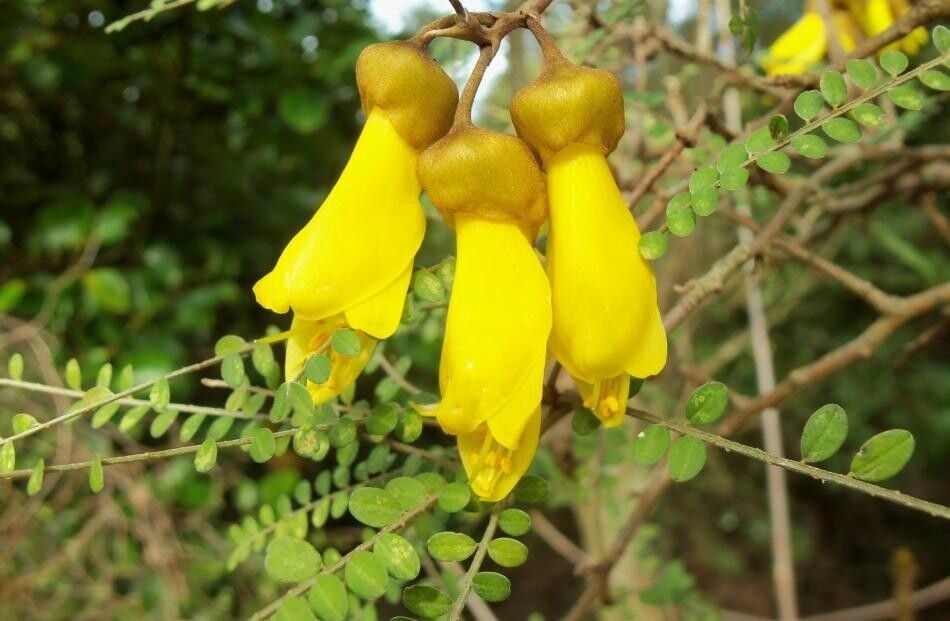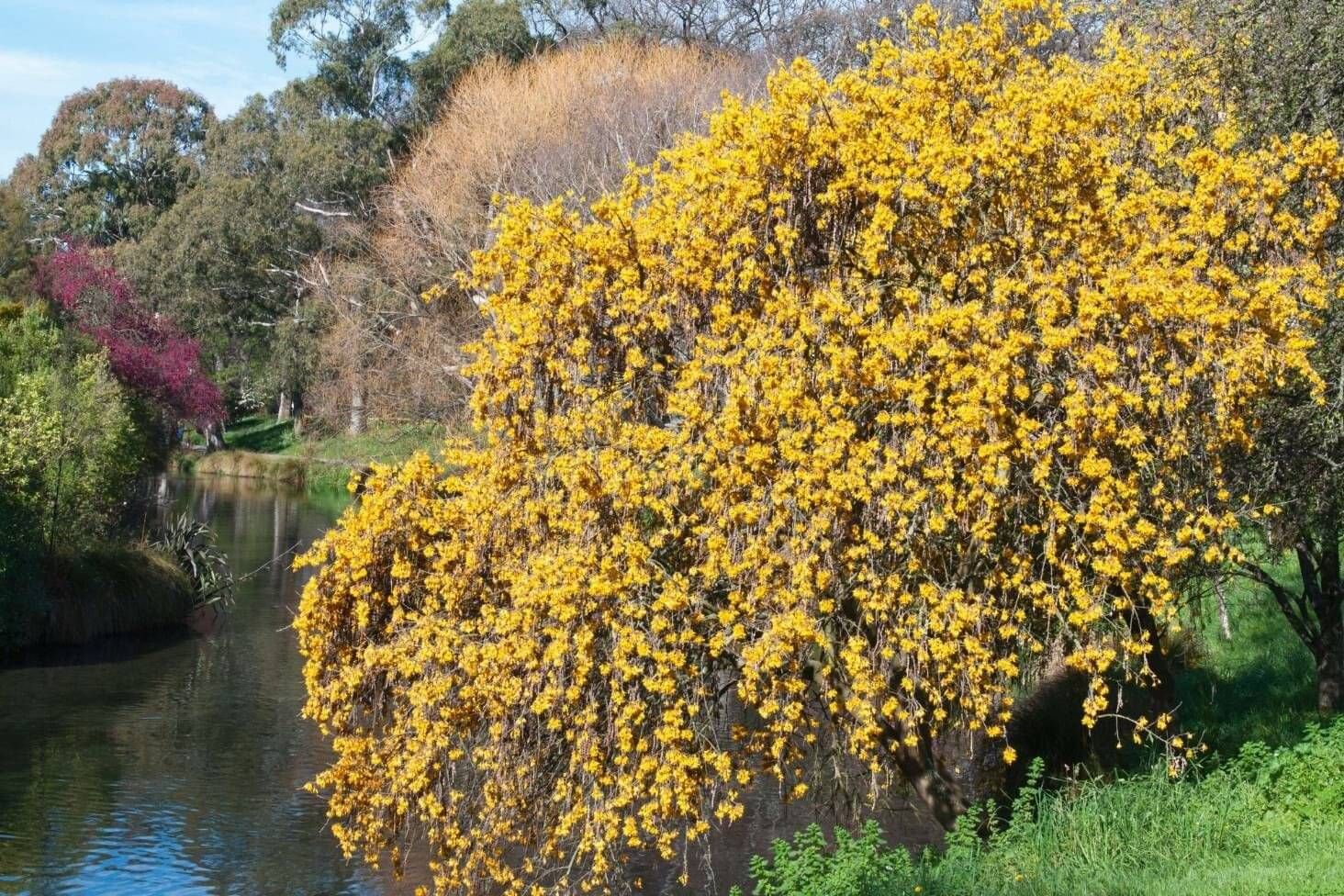Kowhai
Distribution of kōwhai
Sophora microphylla is the most widespread species of kōwhai being found throughout both the North and South Island.
In the wild, some species are restricted to the North Island (S. fulvida, S. godleyi, S. tetraptera and probably S. chathamica) and others to the South Island (S. longicarinata and S. prostrata).
S. molloyi is a particularly restricted species that's found only on islands in Cook Strait and on headlands along the south Wellington coast.
Kōwhai occupy a wide range of habitats that includes river terraces, dunes, flood plains, lake margins, hill slopes and rocky ground.

Threats
Three species of kōwhai, S. fulvida, S. longicarinata and S. molloyi, are now listed by the New Zealand Threatened Plant Panel as ‘Naturally Uncommon’. This recognises their restricted ranges and suggests some level of conservation monitoring to ensure they aren't in decline.
The other species, while still relatively common, have suffered significant loss of habitat through past forest clearance for agriculture.
In parts of their range, kōwhai are now scarce and those that remain are lone trees or small groves growing in isolation. Such trees are vulnerable to further loss through impacts of stock and lack of regeneration opportunities. In parts of the South Island in particular, rabbits and hares prevent natural recruitment in all but the most inaccessible sites.

Quick facts
Kōwhai trees have small leaflets and juvenile branches on some species are twisted and tangled.
They grow from a seed in the ground to become a tree up to 25 m high.
It's found throughout New Zealand in a diverse range of habitats from riparian forests, coastal cliff faces to inland grey scrub communities.
Native birds such as the tui, bellbird, kākā and New Zealand pigeon/kererū/kūkū/kūkupa all benefit from kōwhai trees.
Tui and bellbird and New Zealand wood pigeon/kererū/kūkū/kūkupa feast on leaves and flowers – kōwhai are an important seasonal nectar food source for them.
Māori hold the tree in high esteem, valuing the durability of its hard wood and its many medicinal properties.
With thanks to the Department Of Conservation as the source for this information and images